Gohana village is a water scarce one and is dependent on a single main source of water - a well that is situated at one end of the village. The water is used for cooking and drinking. The closest source of water is a tube well with a TDS of 4000 ppm which is totally unpalatable – women take this water for all washing. The numerous hand pumps in the village goes dry in summer, the water is discolored and sometimes foul smelling – can never depend on them. Their journey to the well is through the main road from the approach of the village, this takes you through the fields dotted with peacocks, many a chowpal where men socialize, one or two verandas where elderly women are seen engrossed in their conversation, the small hill with the temple at the top, goats and buffaloes returning home, women milking their buffaloes–the walk is a pleasant one for all that it is worth. For all of us who have the luxury of drinking water coming home through a pipe or from a bubble top, the warm breeze on a summer evening still is a new experience. The slope coming down to the well makes it a rather joyous walk. An easy, one to two kilometer distance is what a woman needs to cover depending on where her house is located. As the sun begins to retire for the day, women of all ages are seen walking down the path to the well carrying their empty pots and ropes. They go in groups as it is also their time to share their own stories – of children, in-laws, friends and husbands.
Take a peep into that large well, and the head swoons and a tingle in your feet warns you of the depth. But for the women in Gohana that well is the center of their life. Women and girls spend time, take turns to draw water using pulleys and ropes. Their able children help them in pulling up the filled buckets of water. They use a cloth to sieve the water to avoid any floating matter. The walk back home with the two to three pots of water on the head is a long and arduous one. The slope of the road now being upward, the warmth generated with each stride is enhanced by the warmth of the breeze, the sweat breaking out at the temples and nape, the distance somehow begins to feel longer – home seems farther than it is.
The women in Rajasthan wear their goongats, the veil, in respect to the elders and most often their entire face is fully covered and their colorful attire makes them stand out in the otherwise stark landscape—their walk with well-balanced pots on their heads has become a part of the landscape. These water carriers make nice wall paintings both outside their houses and in the temples, an iconic statement of good omen, carved into the social fabric, none of them really talk about the pain in the neck and shoulders that women may experience. Or do they even complain of it – for every homemaker, bringing water home is a given thing, not a choice. Starting at tender years this role of the water carrier — an unpaid and unrecognized job, is a life time position. This effort is a daily experience for women in many parts of rural India, the distance covered in their steady stride back and forth a couple of kilometers from home each time, spending a minimum of an hour on this work each day. If women were to walk this distance everyday say for 50 years of their life, they would have covered a distance that can go around the earth at least one time in their life by foot – All for water.
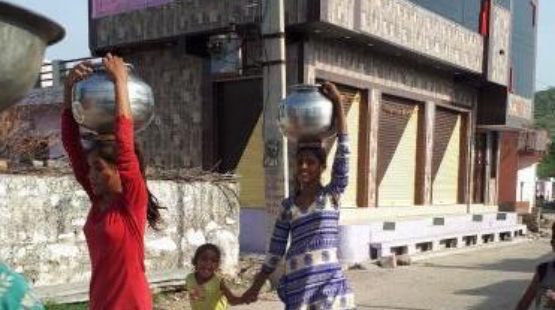
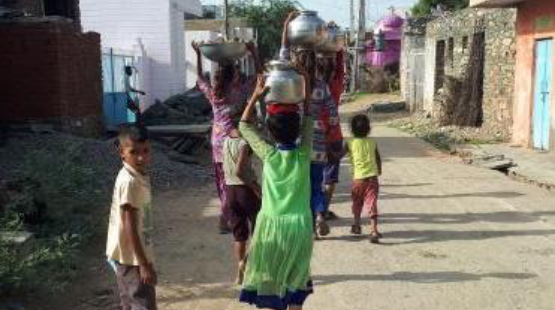
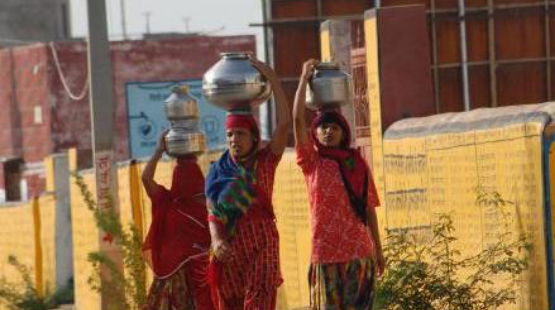
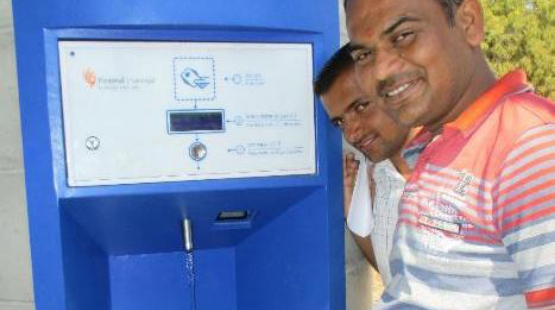
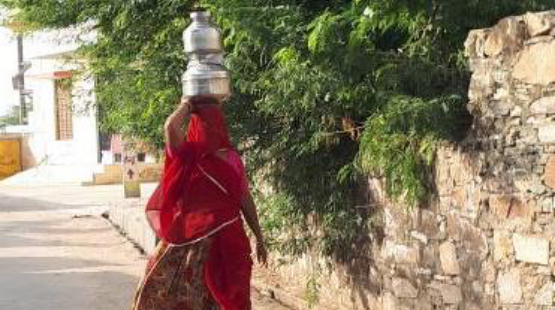
One question that comes to my mind is, how is Sarvajal making things easier for women with our water ATMs? The ATM is located closer to the village in comparison to the well which is located in an isolated place. The place is more accessible and is in a compound and women can feel safe there. Women can go even after the sun is down as it is well lit both by the lights on the road and the lights at the ATM. A CCTV camera installed by the Panchayat in the vicinity of ATM is an added protection. Women’s distance may not be shorter but they definitely do not have to tug at the pulley to get the water they need – saves them the energy and physical effort. If you spend some time at our ATM you will notice that a lot more men are the ones who carry water from the ATM than women –we don’t know if it is because one has to use a card that showcases the man as tech savvy. Is it because carrying water in a bubble top or a camper on a bike or a scooter is seen as a masculine thing to do and seems to be more acceptable in the space of men. Or maybe men have genuinely crossed the stereotypes and barriers that prevented them from carrying water home and are happy being considered helping their women folk at home. Whatever it may be, this role of fetching-water-home behavior displayed by men has given the women a break from bringing water home. It is a gender bender of sorts – a welcome change from the perspective of a woman—Small changes on our road to the larger gender-inclusive vision for the country. We may have to wait to see if it really is a gender bender! Maybe a day will come when the painting on the wall in Gohana has men carrying water on their bikes. For now, I am happy that there is a beginning to a positive change towards alleviating the burden on women.


















































